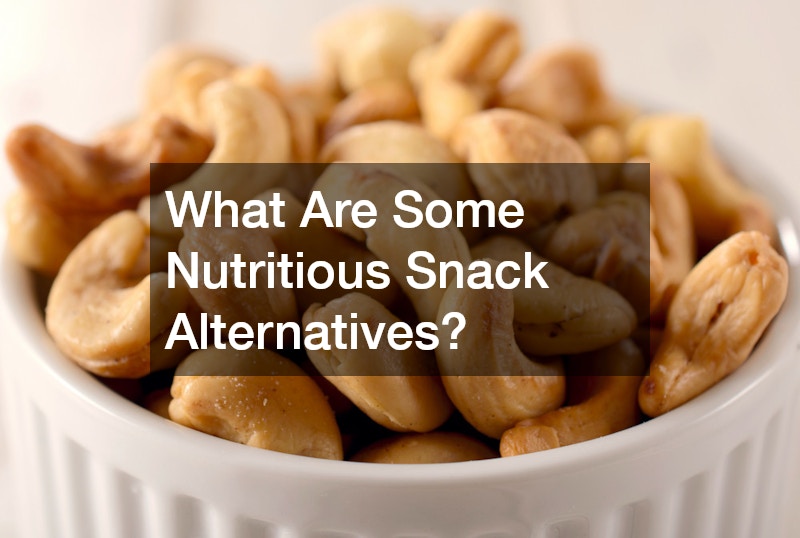Disclaimer: Healthy Lunches. This site provides food and drink content for informational purposes only.
Creating a good and healthy menu doesn’t have to mean extreme diets, weight loss programs, or fancy treatments like sculptra. Instead, it’s about making thoughtful, practical choices every day that enhance your wellness while keeping meals enjoyable. From swapping sugary drinks for herbal teas to experimenting with international flavors like japanese food or a local thai place, there are countless ways to revamp your meals without losing taste or satisfaction.
A well-planned good and healthy menu can also tie into broader lifestyle choices, including how food is prepared and sourced. Paying attention to kitchen hygiene, such as maintaining your restaurant grease trap and hiring kitchen hood cleaners when necessary, ensures the food you consume remains safe and fresh. Meanwhile, cooking oil recycling can reduce waste and promote sustainability in your home kitchen or local restaurant. Even outdoor meals served al fresco can be part of a mindful, healthy eating approach, encouraging fresh air, seasonal produce, and social interaction.
This guide explores practical swaps for everyday foods, fats, proteins, snacks, desserts, and dining out. You’ll learn how to enjoy nutrient-rich alternatives without feeling deprived, with guidance that bridges creativity, convenience, and wellness. By the end, you’ll see that a good and healthy menu can be accessible, versatile, and enjoyable, helping you feel nourished in body and mind.
What Are The Best Alternatives For Sugary Drinks?

Sugary drinks are often one of the easiest targets when creating a good and healthy menu. These beverages can contribute to spikes in blood sugar, excessive calorie intake, and long-term health concerns. Making simple swaps can maintain enjoyment and flavor while reducing unnecessary sugar consumption.
Exploring Natural Sweeteners
Replacing refined sugar with natural sweeteners can enhance flavor without the health risks of processed sugar. Options like honey, maple syrup, and stevia can sweeten drinks, smoothies, and baked goods while providing subtle nutrients. Honey contains trace antioxidants and antibacterial properties, while maple syrup offers minerals like manganese and zinc. Stevia, a zero-calorie plant-based sweetener, allows sweetness without blood sugar spikes, making it ideal for beverages and cooking. These swaps can be easily integrated into a good and healthy menu, offering both taste and improved nutrition.
Benefits of Herbal Teas and Infused Waters
Herbal teas and infused waters are refreshing alternatives to soda or sweetened juices. Teas like chamomile, hibiscus, or peppermint provide flavor without calories, while infused waters with cucumber, mint, or citrus add natural sweetness. Drinking herbal teas or infused waters supports hydration, digestion, and relaxation, making them excellent complements to a balanced good and healthy menu. Preparing these drinks al fresco during warmer months can also add enjoyment, combining nourishment with the benefits of outdoor time and social interaction.
How Can I Swap Out Refined Carbs For Healthier Options?
Refined carbs like white bread, pasta, and pastries are common staples but often contribute to blood sugar spikes and low satiety. A good and healthy menu focuses on higher-fiber alternatives that provide sustained energy and additional nutrients.
Choosing Whole Grains
Whole grains such as quinoa, brown rice, barley, and whole-wheat pasta are nutrient-dense alternatives to refined options. These grains provide fiber, B vitamins, and minerals while supporting healthy digestion and blood sugar regulation. Swapping refined bread for whole-grain varieties or choosing brown rice over white rice is a simple, effective way to maintain flavor while improving nutrition. Even Japanese food offers whole-grain options like brown rice sushi or soba noodles, aligning with a globally inspired good and healthy menu.
Incorporating Vegetables As Carbs
Vegetables can also replace traditional carbs, providing lower-calorie, nutrient-rich alternatives. Cauliflower rice, zucchini noodles, and spaghetti squash are versatile substitutes that can be used in stir-fries, pasta dishes, or salads. This approach increases vegetable intake while reducing refined carb consumption, supporting both weight management and nutrient density. All without necessarily relying on any particular weight loss programs. Many local thai places creatively integrate these swaps into traditional dishes, making it easier to enjoy flavorful meals while sticking to a good and healthy menu.
What Are Some Healthier Fat Options For Cooking?

Fat is essential in the diet, but the type of fat consumed can influence overall health. Incorporating healthy fats into a good and healthy menu supports cardiovascular health, satiety, and nutrient absorption.
Exploring Olive Oil Vs. Butter
Olive oil is a staple in heart-healthy diets due to its high content of monounsaturated fats and antioxidants. Using olive oil in salad dressings, sautéed vegetables, or marinades is a simple way to reduce saturated fat intake while adding flavor. Butter, although flavorful, is higher in saturated fats and should be used sparingly. Choosing olive oil over butter in everyday cooking is a practical adjustment that aligns with a good and healthy menu.
Alternative Cooking Fats: Coconut Oil And Avocado Oil
Coconut oil and avocado oil offer additional healthy cooking options. Coconut oil provides medium-chain triglycerides that can boost energy, while avocado oil is rich in monounsaturated fats and vitamin E. Both oils have higher smoke points than butter, making them suitable for sautéing or roasting. Using these alternatives diversifies fat sources, encourages nutrient-rich cooking, and keeps your good and healthy menu versatile and delicious.
How Can I Replace Red Meat In My Diet?
Reducing red meat consumption is a key strategy for creating a good and healthy menu. Substituting plant-based proteins and lean meats can improve heart health, lower saturated fat intake, and provide nutrient diversity without sacrificing taste.
Plant-Based Protein Sources
Beans, lentils, chickpeas, and quinoa are excellent plant-based protein sources. They are high in fiber, vitamins, and minerals while supporting muscle maintenance and satiety. Plant-based proteins can be incorporated into stir-fries, soups, salads, and even sushi rolls when exploring japanese food options. Lentil curries or tofu stir-fries at a local thai place can replace traditional red meat dishes, creating a nutrient-rich, satisfying good and healthy menu.
Lean Meats And Poultry Options
When opting for animal protein, choose lean meats such as chicken or turkey. These options are lower in saturated fat than red meat and versatile in a variety of dishes, from baked entrees to grilled salads. Lean meats pair well with vegetables, whole grains, and flavorful sauces, supporting both taste and nutritional quality. Selecting lean poultry over red meat consistently aligns with a good and healthy menu without feeling restrictive.
What Are Some Nutritious Snack Alternatives?

Snacks play a big role in overall dietary quality. Replacing processed snacks with nutrient-dense alternatives can keep energy stable and enhance the overall healthfulness of a good and healthy menu.
Switching Chips For Nuts And Seeds
Nuts, seeds, and trail mixes provide healthy fats, fiber, and protein. Options like almonds, pumpkin seeds, and walnuts can replace chips or fried snacks while supporting heart health. Trail mixes with dried fruits and seeds offer natural sweetness and crunch, satisfying cravings without refined sugars. Incorporating these snacks at home or al fresco on sunny afternoons encourages healthier habits that are sustainable and enjoyable.
Replacing Sugary Granola Bars With Homemade Options
Store-bought granola bars often contain added sugars, oils, and preservatives. Making granola bars at home with oats, nuts, seeds, and natural sweeteners such as honey or maple syrup offers a wholesome alternative. These bars can be customized with flavors like cocoa, coconut, or dried fruit, providing a satisfying, nutrient-packed snack that fits seamlessly into a good and healthy menu.
How Can I Make My Desserts Healthier?
Desserts don’t need to be off-limits when building a good and healthy menu. Simple ingredient swaps can reduce sugar and calorie content while enhancing nutritional value.
Using Fruit As A Natural Sweetener
Ripe bananas, applesauce, and dates can naturally sweeten baked goods, puddings, and smoothies. These fruits provide vitamins, minerals, and fiber while replacing refined sugar. Fruit-based desserts also pair well with dark chocolate, nuts, or yogurt, creating indulgent yet nutritious options that satisfy cravings without compromising wellness.
Dark Chocolate Vs. Milk Chocolate
Dark chocolate contains higher cocoa content and antioxidants compared to milk chocolate. Using dark chocolate in desserts or as a snack adds rich flavor while providing cardiovascular benefits. Pairing dark chocolate with fresh fruit or nuts enhances both taste and nutrition, fitting perfectly within a good and healthy menu.
What Are Healthy Swaps For Breakfast Foods?

Breakfast sets the tone for the day, and choosing nutrient-dense options supports energy, focus, and satiety. A good and healthy menu at breakfast prioritizes fiber, protein, and natural flavors.
Replacing Sugary Cereals With Oats
Sugary cereals are often high in refined carbs and added sugars. Whole oats, whether in oatmeal or overnight oats, provide fiber, protein, and sustained energy. Toppings like berries, nuts, or a drizzle of honey add flavor and nutrients, creating a wholesome start to the day. Even incorporating seasonal fruits from trees for sale in your garden or local market can enhance freshness and enjoyment.
Healthy Alternatives To Pancakes And Waffles
Traditional pancakes and waffles can be modified using whole grains, oat flour, or almond flour. Recipes that integrate fruit, Greek yogurt, or chia seeds offer more fiber, protein, and healthy fats. These swaps maintain indulgence and texture while aligning with the goals of a good and healthy menu, helping you enjoy breakfast without excess sugar or refined ingredients.
How Can I Make Dining Out Healthier?
Dining out is a social and cultural experience, but it can also be navigated in ways that fit a good and healthy menu. Selecting dishes thoughtfully and practicing portion control can support wellness goals while still enjoying flavorful meals. Being mindful of ingredients, cooking methods, and portion sizes allows diners to maintain a balanced approach without feeling restricted. Dining out can also be an opportunity to try new flavors, cuisines, and preparations that you might not normally cook at home, adding variety and enjoyment to your good and healthy menu.
Making Smart Menu Choices
Opting for grilled, baked, or steamed options instead of fried foods reduces unhealthy fat intake while keeping dishes flavorful and satisfying. Many local thai places offer vegetable-forward dishes or lighter broths, which provide a nutrient-dense and balanced meal. Japanese food establishments often feature sashimi or sushi with brown rice as a whole-grain alternative, making it easier to enjoy traditional favorites while still prioritizing health. Additionally, choosing meals with plenty of vegetables, lean proteins, and mindful carbohydrates ensures that your dining choices reflect the principles of a good and healthy menu.
It can also be helpful to ask for sauces or dressings on the side, reducing added sugars and unhealthy fats, or to request substitutions such as steamed vegetables or mixed greens in place of fries or heavier sides. Sharing appetizers or entrees with friends and trying seasonal specials made from fresh, locally sourced ingredients further enhances nutrition while keeping the dining experience engaging. Being intentional about choices at restaurants encourages both satisfaction and wellness, allowing a good and healthy menu to extend beyond the home kitchen.
Portion Control And Sharing Plates
Portion sizes at restaurants can be much larger than necessary. Sharing plates or requesting half portions is a practical strategy to prevent overeating while still enjoying a variety of flavors. Eating al fresco can also encourage slower eating and mindfulness, helping diners savor meals and maintain balance. Pairing these approaches with seasonal salads or sides prepared with healthier fats like olive or avocado oil further enhances nutritional quality.
Creating a good and healthy menu is about consistency, variety, and thoughtful ingredient choices. From simple swaps like natural sweeteners and whole grains to plant-based proteins and healthier fats, each change adds up to meaningful improvements in overall wellness. Incorporating options like japanese food or dishes from a local thai place keeps meals exciting while aligning with health goals. Snacks, desserts, and breakfast options can also be upgraded, demonstrating that indulgence and nutrition can coexist.
Maintaining proper kitchen practices, including restaurant grease trap maintenance, cooking oil recycling, and professional kitchen hood cleaners, ensures the food consumed is safe and sustainable. Outdoor meals al fresco and ingredients sourced from trees for sale or through local landscape contractors can also enhance enjoyment and connection with nature. By embracing these strategies, rather than going straight to more niche methods, like sculptra, a good and healthy menu becomes more than a list of foods—it’s a practical, sustainable approach to nourishing the body, supporting wellness, and enjoying a rich variety of flavors every day.



